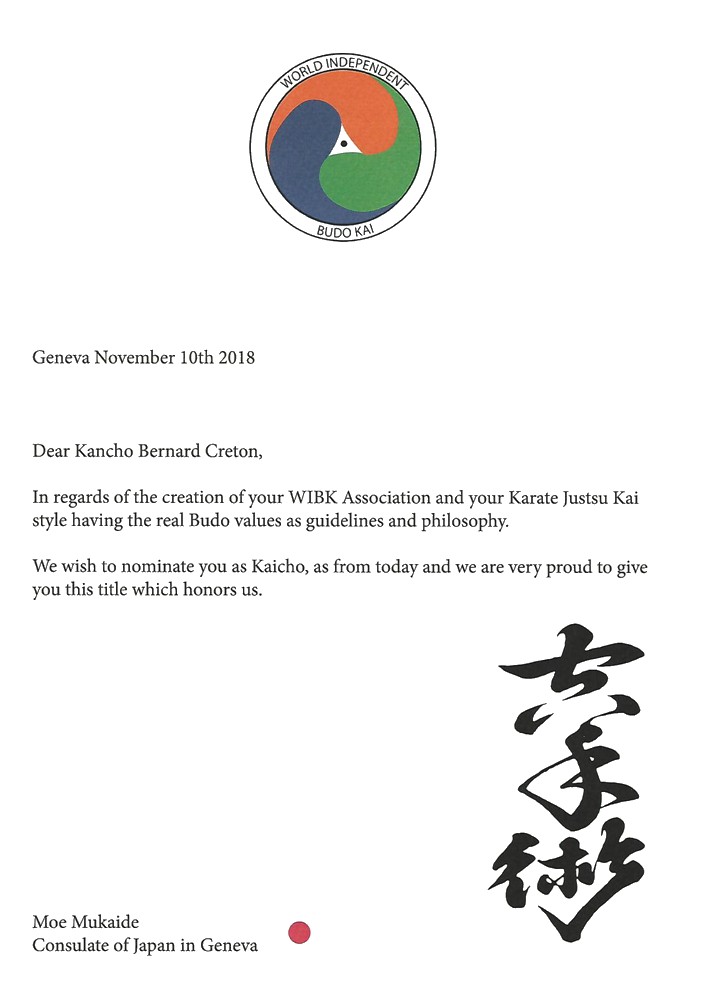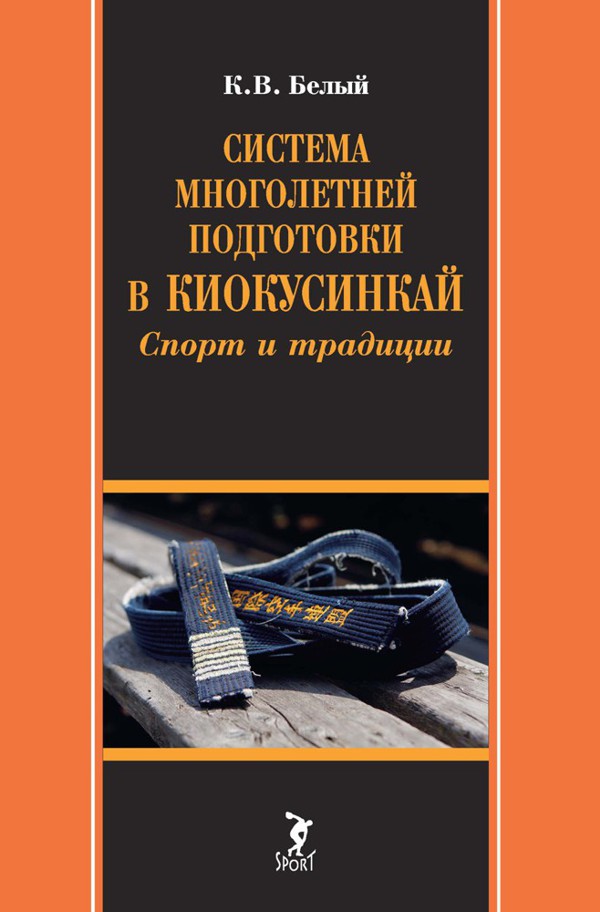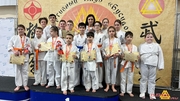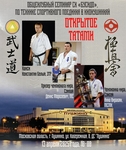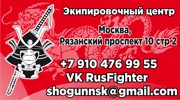Biographical interview |
Tweet | Посетителей: | 5559 |
Bernard Creton - Kaicho (founder) of the Jutsu Kai karate school and the World Independent Budokai union
2013
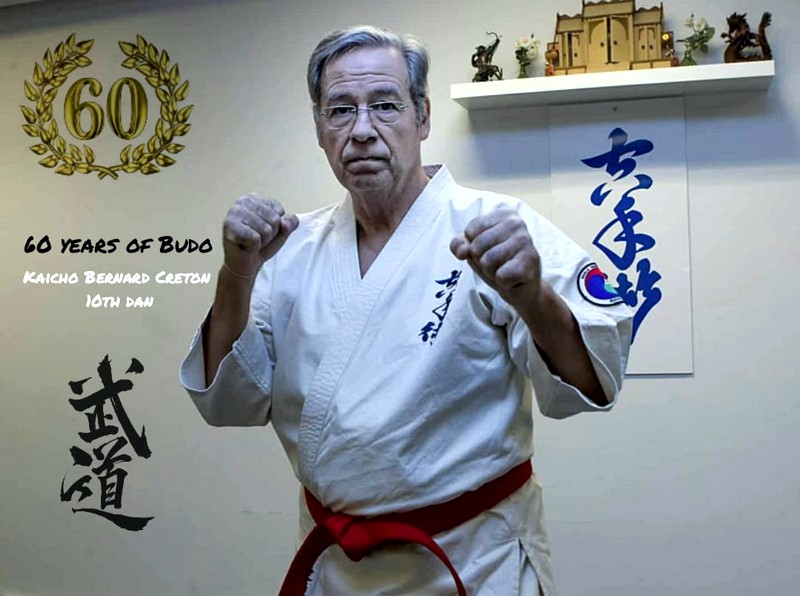
PHOTOGALLERY
How, when and where you started karate?
When I was young I never really liked sports such as football, cricket was OK and I was very good at javelin and discus throwing, but when I heard a speech about Judo I became very interested and after some searching for a club that would take me I started with Judo in 1962, in a small town very close to South London. No one had heard of Karate then. After some 3 years or so there came a Judoka to our club who was also training in Shotokan Karate, and he showed us a few basic techniques. Then a short time after this came a man saying he was a black belt in Mas Oyama’s Karate and asked if he could run a class. He was allowed to do so and I joined this as well as continuing with Judo. After about a year (1965/6) I was taken to visit a Kyokushin club and was totally smitten by what I saw and immediately realized that I had not been taught real Karate at all, and it was the start of a lifelong journey. .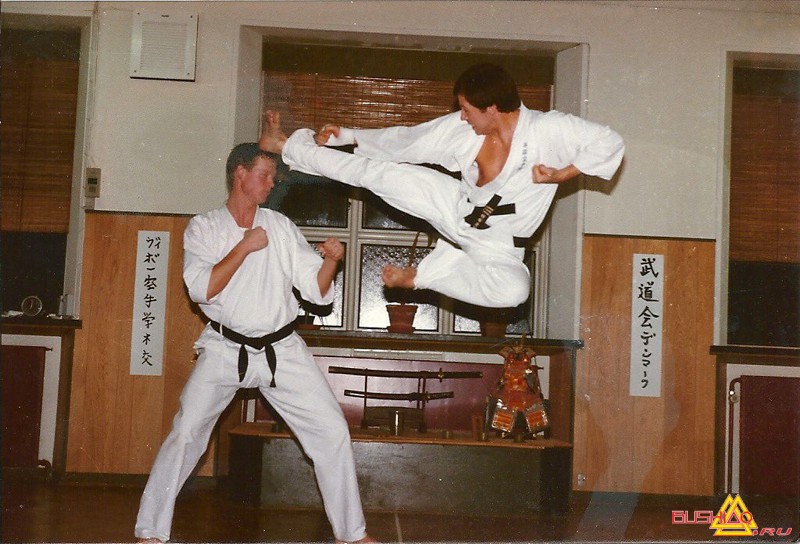

Who are the your first teachers?
My first Kyokushin Sempai was Bryan Dowler. He was a former British Judo Champion and was one of the first BKK students in the UK. He later became Chairman of the BKK. I also trained with Hanshi Arneil and was Captain of the English Knockdown team for him in 78/79. I also went to live in New York USA and trained full time under Hanshi Tadashi Nakamura. This last was the biggest influence on my life. I trained with Brian Fitkin and was a member of the early British All-Styles Squad under Enoida (Shotokan) Suzuki (Wado Ryu) and Arneil (Kyokushin) during the late 60’s and early 70’s.
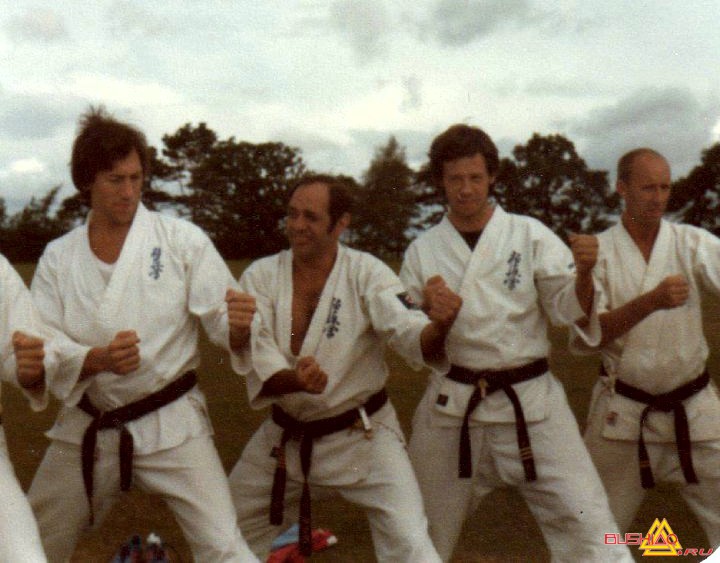 Left to right: Brian Fitkin, Steve Arneil, Bernard Creton, 1979
Left to right: Brian Fitkin, Steve Arneil, Bernard Creton, 1979
With whom did you trained, who have been your friends in karate, tell us about them?
I have trained with Bob Boulton (he was the first in UK to introduce Kyokushin) Brian Fitkin, Howard Collins, David Cook, Tatsuo Nakamura, Jeff Whybrow, Barry Evans, Nick DaCosta, Glen Sharp, Loyd Payne and many more.
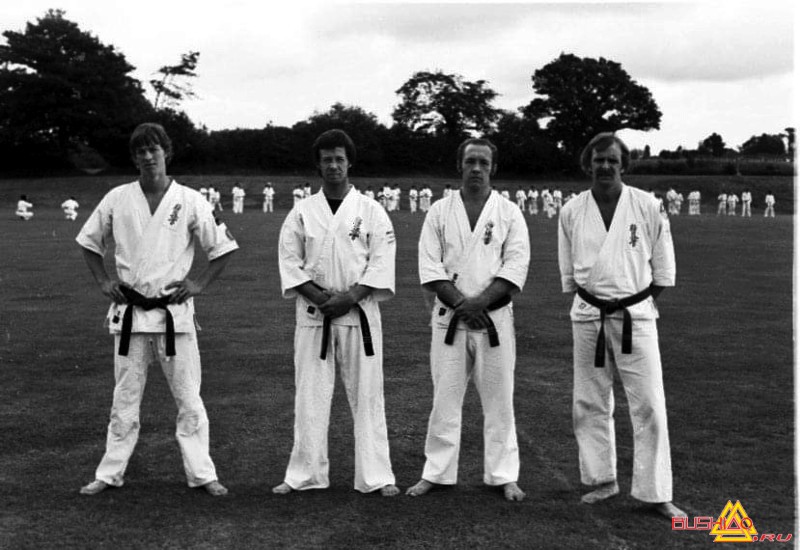 Left to right: Jeff Whybrow, Bernard Creton, Howard Collins
Left to right: Jeff Whybrow, Bernard Creton, Howard Collins
How often then you and other took the part in the event?
Back in those days there were nowhere as many events as today. We entered all the BKK events and anything else that was arranged by the National Governing Body of the time – WUKO mostly as knockdown hadn’t been invented then.
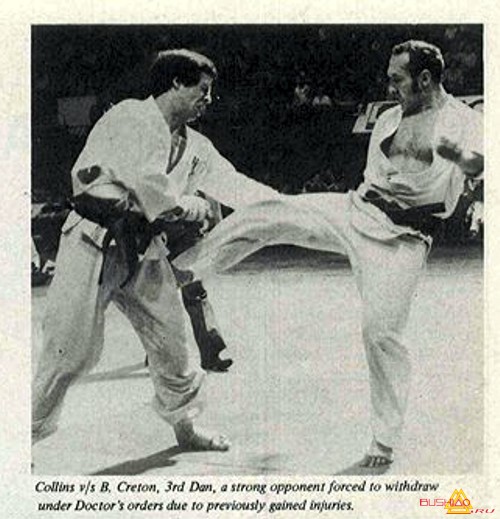
Bernard Creton vs. Howard Collins, European Championship 1978.
Tell us about your most memorable tournaments and fights.
I think 2 stand out most; I fought and won the opening fight of the first ever BKK British Open at Crystal Palace in 1976. I was not going to fight (It was a very hot summer and I had sunstroke from falling asleep in my garden), but was told I had to cos I was to fight a big one from another style. It was only open weight then, I was 74kg and my opponent was 92. I knocked him out with Mawashi Geri to his head and he had to be ambulanced to the local hospital because they could not revive him in situ.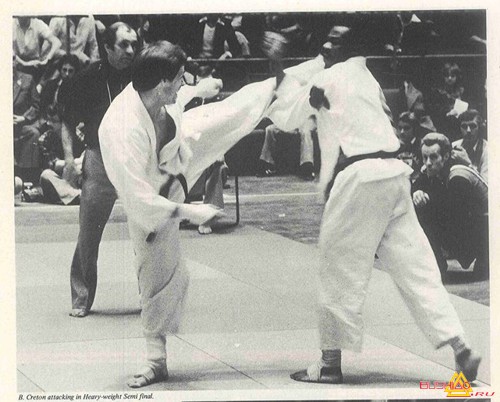
The second was in Japan (I have just put the fight on my Facebook) with Myoshi from the original Honbu. He had badly beaten up one of my English students who had travelled to Honbu as Uchi Deshi, so when I could see that I was drawn against him it was personal obligation to beat him. After the fight I told him he must take care of my student in future. I found out just a few years ago that my student had died whenI met his Japanese wife while on a visit to Japan. She told me that after his death Myoshi came to visit her and helped her a lot during the hard times straight after. This to me is what BUDO really means, and just grades and prestige.
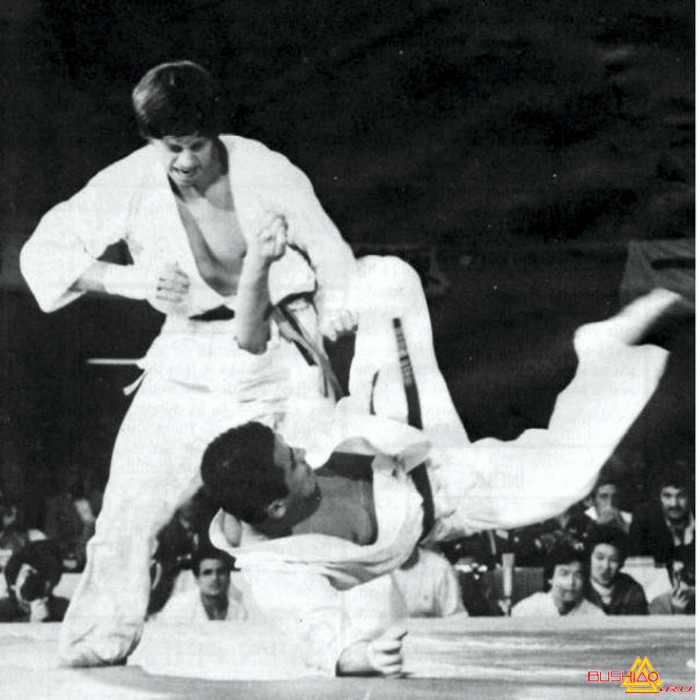 Fight with Kazuo Miyoshi at the 1979 World Championship
Fight with Kazuo Miyoshi at the 1979 World Championship
Tell us about your involvement in the World Cup.
I was at that time the captain of the ENGLISH team and was selected to fight in the 2nd World Open. As mentioned earlier, I had personal reasons for wanting to fight there as well as the need to prove something after the way I was being treated within the BKK at this time.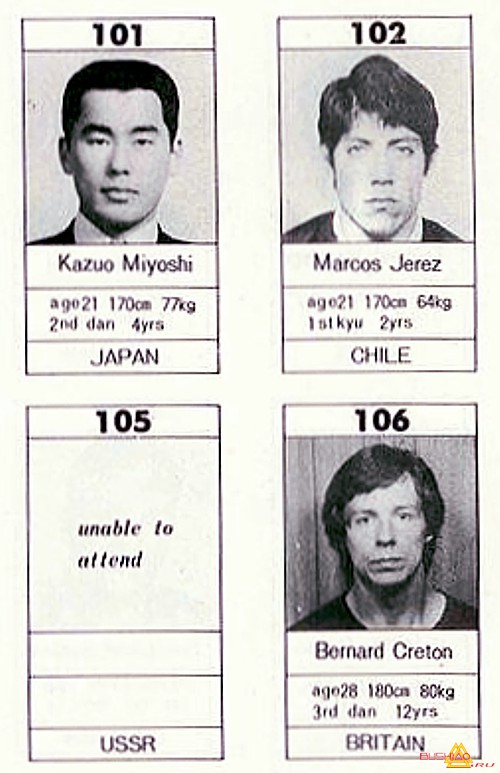 My first fight was with one from what was then Yugoslavia, he was more than 14 kg heavier than me.
My first fight was with one from what was then Yugoslavia, he was more than 14 kg heavier than me. 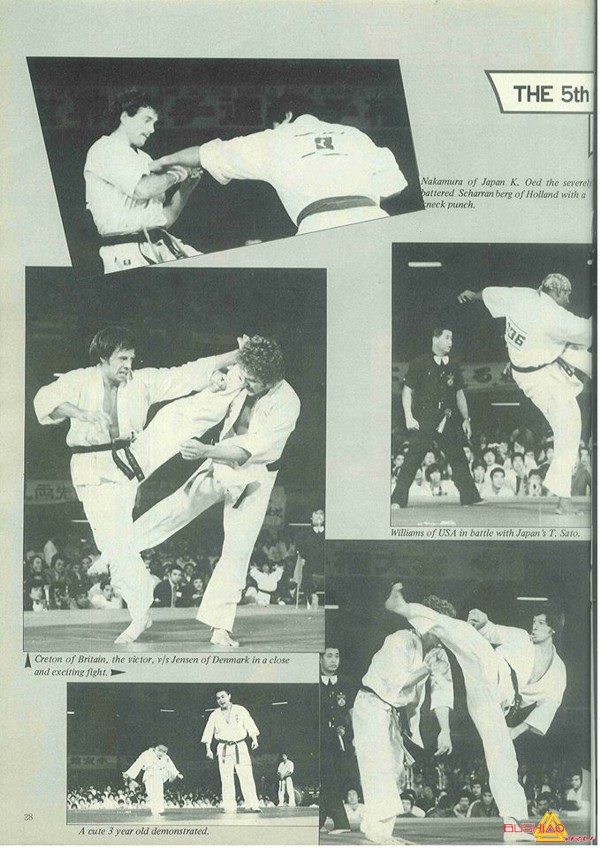
After him it was, I believe Myoshi from the Japan Kyokushin Honbu. 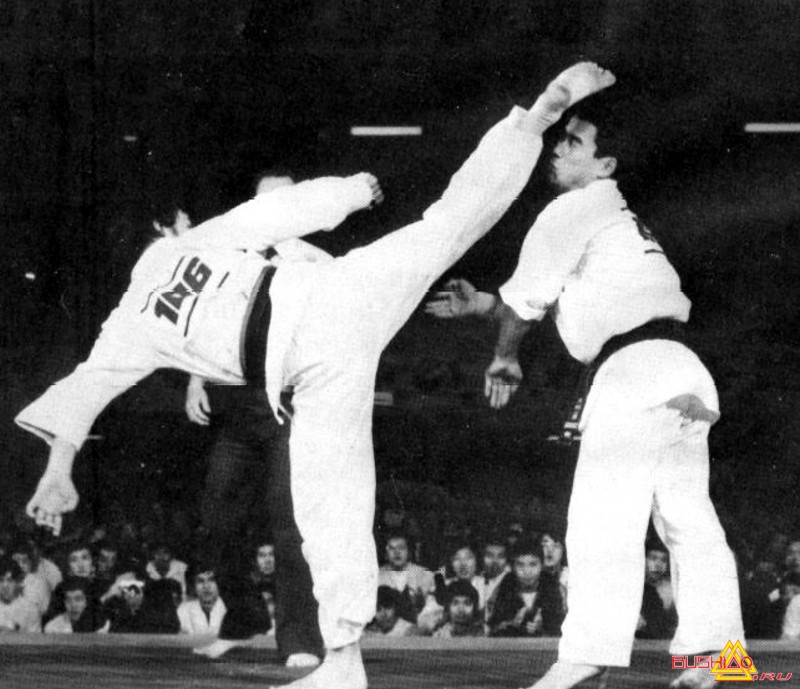
Fight with Kazuo Miyoshi at the 1979 World Championship
Then it was Flemming Jensen – later named Flamming Schrøter – from Denmark. He kept telling me before and after each fight, that he wanted to fight me. When we did fight I won but had my knee damaged by in our fight which ended up being quite dirty. If Flemming hadn’t kept on pressing me I was going to withdraw owing to this damage. After fighting Flemming my knee was not good and on the advice of the tournament doctors I withdrew. I was to fight Willie Williams.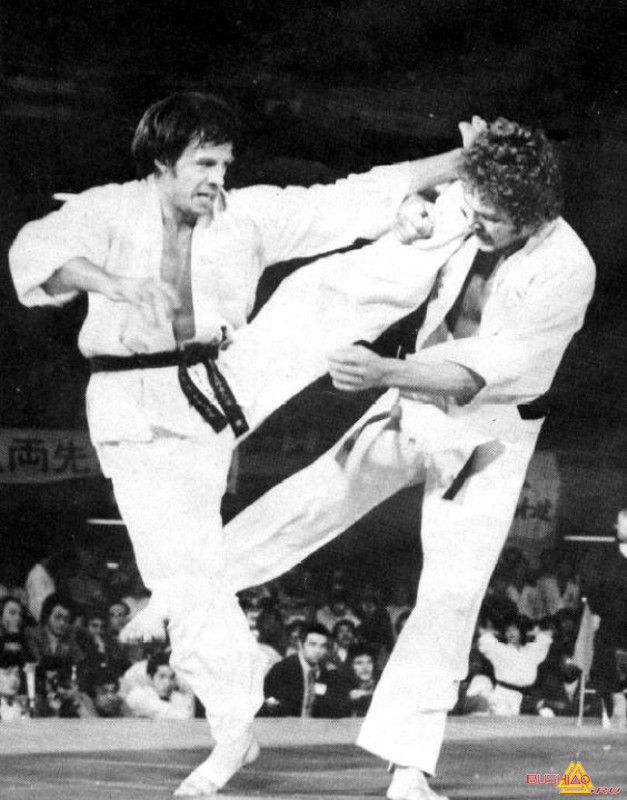
Fight with Flemming Jensen at the 1979 World Championship
But by this time the tournament had become very political/racially motivated because the Japanese were cheating so much that it was the world against Japan – but this is another story for another day. Needless to say I ended up in 6th place and had my eyes opened very widely and many of my ideals crushed..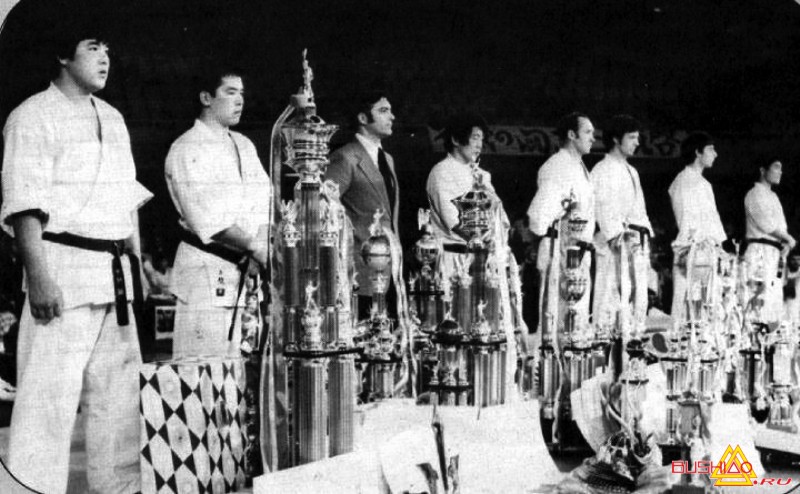
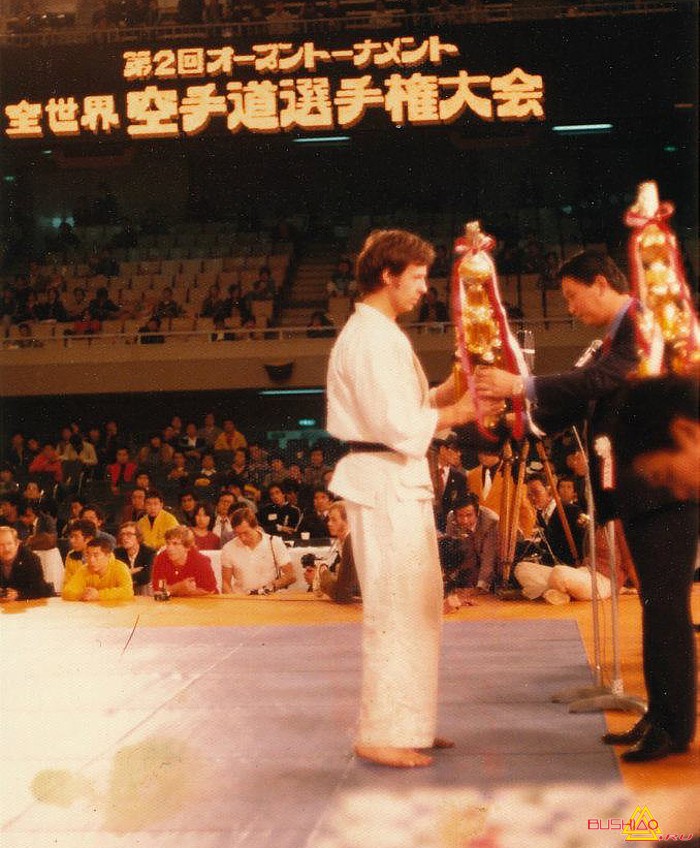
Tell us about how you started to teach karate.
I began teaching Kyokushin Karate as an assistant to my first Sempai when I around 15 years old, I think I was a 3rd Kyu then.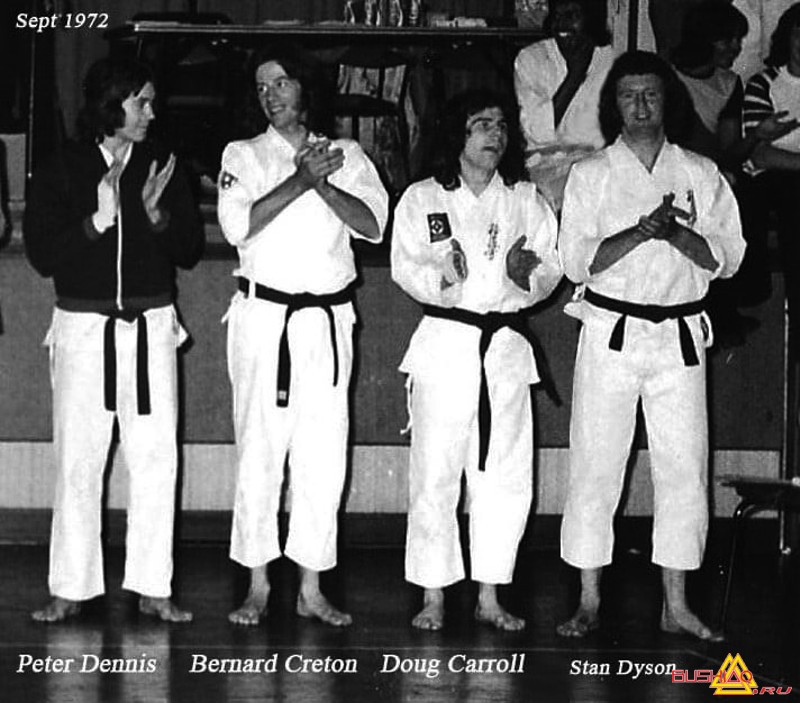
Why did you move to Denmark?
I was invited to teach in Denmark by a former Kyokushin Black Belt who had been in my line at the BKK summer camp in Exeter, South West England in 1979. Hanshi Dave Cook suggested he contact me after I left the BKK in Feb 1980.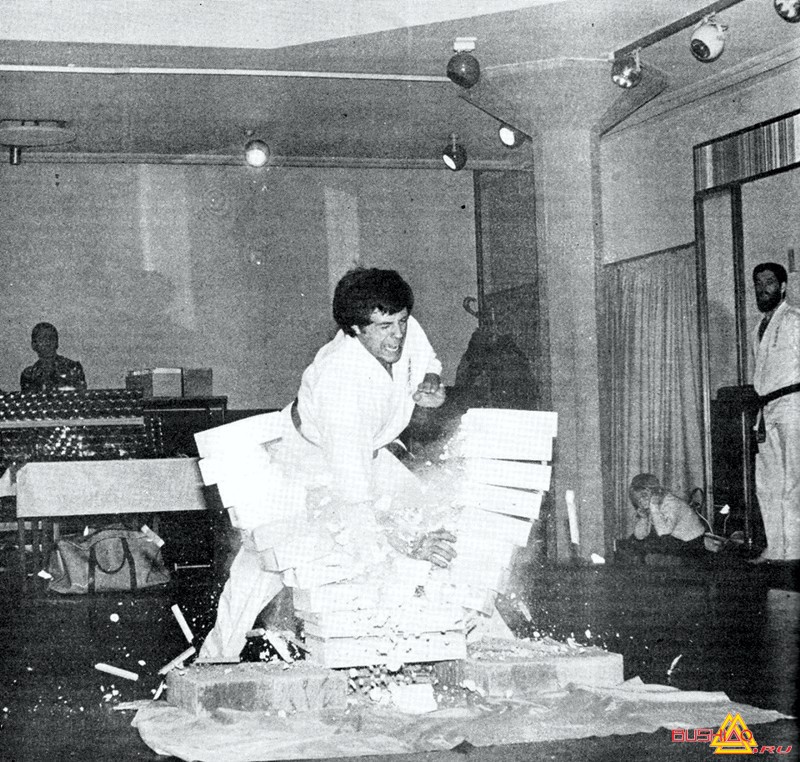
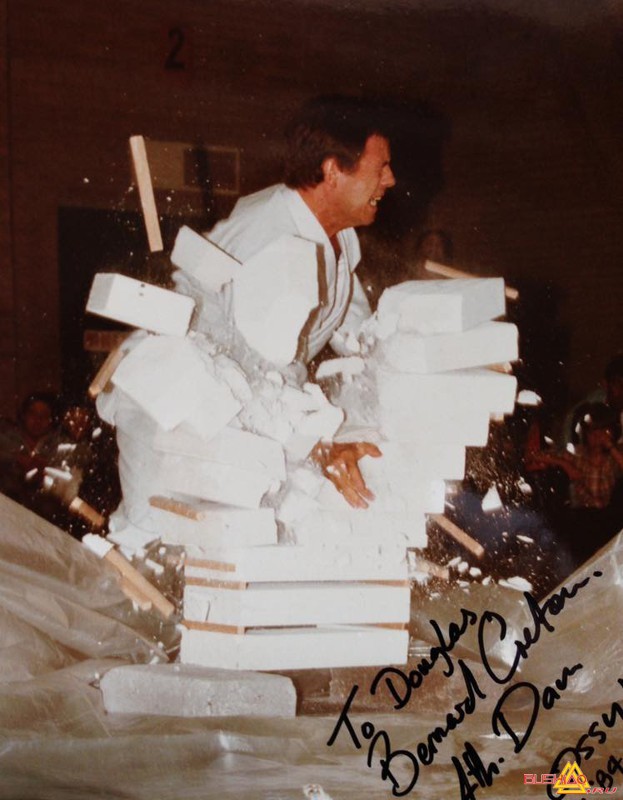
Tell us about the creation of the organization Karate Jutsu Kai.
Karate Jutsu was started in February 1980 by my then, Sensei, Bryan Dowler and myself. This came about because of internal politics within the BKK over the last several years. Shihan Dowler was at the time chairman of the BKK and had been instigational in bringing about the biggest development of the BKK up to then. He was well known by Sosai Oyama and met with him in Japan on many occasions to discuss world wide Kyokushin. Within KJK it was my job to develop the system and Shihan Dowler was directing us into the world of Karate outside of the BKK. Shihan Dowler retired after some years and took over completely in the mid 80’s.
How do you think - whether Kyokushin modern world, whether it is up to date? Can you compare the Kyokushin 70 80s with a modern Kyokushin?
I started with Kyokushin around 1966 and have see great change through the years. As a fighting system it has developed a lot over the last few decades but because of all the break ups and splits, many have lost the original ‘way’ of Kyokushin. I am not saying it has been completely lost as there are still some, that truly and with great humility follow the original concept but there are too many that forget what it says in the original Dojo Kun. But this is human nature and we must look forward and not backwards too much. When I was at Hanshi Royama’s World Open in Hungary, they had a Kata section, but while watching it I thought I was at a Shotokan tournament by the way these Karateka were performing Kyokushin Kata. I can only assume that they have been changed to make them look ‘nicer’ for mixed style events.